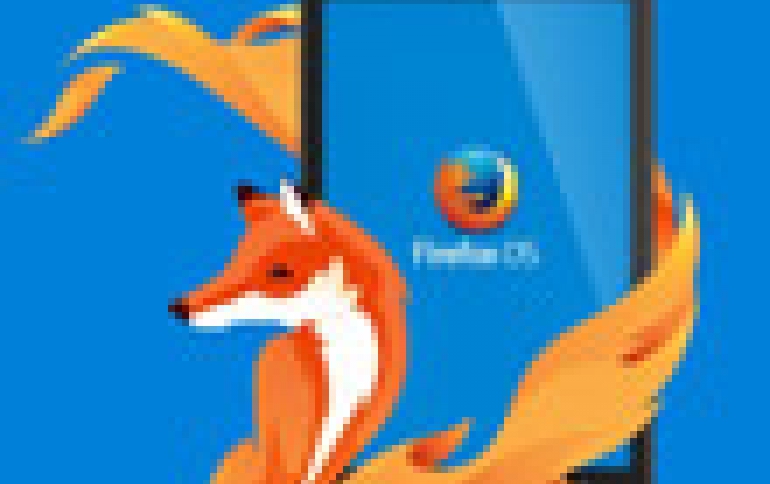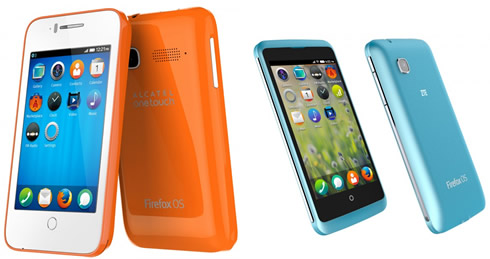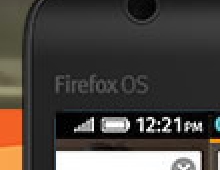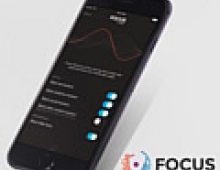
Mozilla Firefox OS Expands To More Devices
Mozilla demonstrated the growth of its Firefox OS open mobile ecosystem at a press event on the eve of Mobile World Congress in Barcelona.
New devices
The event introduced seven new commercial Firefox OS devices and highlighted advancements and partnerships that Mozilla hopes will enable the platform to scale up in 2014.
ALCATEL ONETOUCH, Huawei, LG and ZTE are all using Firefox OS on a range of smartphones. The Firefox OS devices unveiled today showcase dual-core processors, higher screen resolution and more. The newest Firefox OS devices to join the family include the ZTE Open C and Open II, Alcatel ONETOUCH Fire C, Fire E, Fire S and Fire 7 tablet, all using Snapdragon processors from Qualcomm Technologies.

ALCATEL's Fire S is the company's first Firefox device with LTE built-in. The handset features OS 1.3, a 4.5-inch qHD display, 8MP rear camera with a 2MP front-facing cam, a quad-core 1.2GHz CPU and NFC.
The Fire E has the same 4.5-inch qHD display as the S, but it uses a dual-core 1.2GHz processor, 5MP rear camera and VGA front-facing cam.
The C has a 3.5-inch HVGA display, dual-core 1.2GHz processor, and a VGA camera.
The Fire 7 tablet has a 7-inch qHD display, dual-core 1.2GHz, VGA back and front cameras among its specs.
New markets
Firefox OS will be expanding into new markets in 2014. Telefonica will build on the list of countries where it's selling Firefox OS phones, with eight more launching this year: Argentina, Costa Rica, Ecuador, El Salvador, Germany, Guatemala, Nicaragua and Panama. Deutsche Telekom will also add four new markets: Croatia, the Czech Republic, Macedonia and Montenegro.
Operator support for Firefox OS also continues to expand, as Telkomsel and Indosat have joined the list of 21 key operators across the globe that support the open Web device initiative. That list also includes Mozilla's partners announced last year: America Movil, China Unicom, Deutsche Telekom, Etisalat, Hutchison Three Group, KDDI, KT, MegaFon, Qtel, SingTel, Smart, Sprint, Telecom Italia Group, Telefonica, Telenor, Telstra, TMN and VimpelCom.
Spreadtrum has announced WCDMA and EDGE turnkey reference designs for Firefox OS as well as the first chipset for US$25 smartphones, the SC6821.
Upcoming Firefox OS versions
Mozilla says that upcoming versions of Firefox OS will offer users new features and services including intuitive navigation, a universal search feature, support for LTE networks and dual SIM cards, easy ways to share content, ability to create custom ringtones, replaceable home screens and Firefox Accounts.
New versions of Firefox OS have performance improvements including speedier launch times, smoother scrolling and improved keyboard accuracy.
Here are highlights on a few of the features coming next for Firefox OS:
- Deep customization options for operators and manufacturers, developers and users. This includes the ability to create custom ringtones and replaceable home screens.
- A new universal search. The feature is available on any screen - swipe down from the top to find new apps, content or navigate to anything on the phone or the Web.
- New navigation features to make multitasking fluid, much like how users interact with the Web. Users can swipe from the left and right edges to move between pages, content and apps.
- Easy and direct sharing of content (and even software updates) in a secure way with NFC support, without the need for data or Wifi.
- LTE support
- Firefox OS will introduce Firefox Accounts and services. Firefox Accounts is a safe way for users to create an account that enables them to sign in and take Firefox everywhere. With Firefox Accounts, Mozilla can better integrate services including Firefox Marketplace, Firefox Sync, backup, storage, or even a service to help locate, message or wipe a phone if it were lost or stolen.
Apps and customization
Firefox OS devices are built entirely to open Web standards, with every feature developed as an HTML5 application. Mozilla previewed the future of Firefox OS at its press event, demonstrating how its flexibility and customization features.
Mozilla says that significant growth is also happening with apps and content on Firefox OS. The Firefox Marketplace has seen thousands of developers submitting apps and millions of downloads of global and relevant local apps. Top global apps include Cut the Rope, Disney's Where's My Water?, Facebook, EverNav, HERE, Line, Pinterest, SoundCloud, The Weather Channel, TimeOut, Twitter, Yelp and YouTube.
Deutsche Telekom is developing new Firefox OS features for the Future of Mobile Privacy project, a joint effort with Mozilla to bring data privacy closer to customers. The organizations' privacy offices have been collaborating over the past year to conceptualize and develop new privacy features that are currently being tested for consideration in future Firefox OS releases.
Firefox OS is also expanding to additional form factors, as Mozilla's partners work to optimize the software for TVs, tablets and other devices. In January, Panasonic announced a partnership with Mozilla to release next-generation smart TVs powered by Firefox OS.
Mozilla has also launched a new self-service partner portal to fast track manufacturers and streamline bringing devices to market. Manufacturers get all the resources and branding required to launch a Firefox OS device in one place.
Reference hardware and tools
Mozilla also announced new developer reference hardware and tools for the Firefox OS ecosystem.
 Mozilla announced a 4.5" dual-core reference phone - the Firefox OS Flame - enabling developers to test new Firefox OS features and apps against different memory configurations.
Mozilla announced a 4.5" dual-core reference phone - the Firefox OS Flame - enabling developers to test new Firefox OS features and apps against different memory configurations.
Like the commercially available Firefox OS phones, the Flame developer reference phone is powered by a Qualcomm processor, in this instance a 1.2GHz dual core processor. Developers looking to target their apps for specific Firefox OS phones with lower memory footprints also have the option to alter the RAM capacity of the Flame, from 1GB to 256MB, to see how their apps would perform on lower specked phones. The Flame also provides developers and early adopters with access to the latest Firefox OS builds to test nightly releases and contribute to the overall development platform.
Firefox OS Flame Specs (Reference device):
- Qualcomm MSM8210 Snapdragon, 1.2GHZ Dual core processor
- 4.5" screen (FWVGA 854 x 480 pixels)
- Cameras: Rear: 5MP / Front: 2MP
- 3G UMTS quad-band (850/900/1900/2100)
- 8GB memory
- 256MB -1GB RAM (adjustable by developer)
- A-GPS, NFC
- Battery capacity: 1,800 mAh
- WiFi: 802.11 b/g/n, Bluetooth, Micro USB
Mozilla recently introduced a tablet contribution program aimed at accelerating the build of Firefox OS for tablets and its supporting ecosystem, with Foxconn as the first hardware partner.
As part of the Firefox OS tablet contribution program, VIA is offering a 7" Vixen reference tablet for developers around the world to help the Mozilla community complete the build of Firefox OS for tablets.
Developer Reference Tablet Specifications:
VIA Vixen:
- 7" 1024 x 600 HD LCD screen
- 1.2 GHz Dual Core Cortex-A9 processor
- ARM Mali-400 Dual-Processor GPU
- 8GB storage
- 1GB RAM
- Cameras: Front 0.3 MP, Back 2.0 MP
- Wifi: 802.11 b/g/n
Foxconn InFocus:
- 10" screen (1280 x 800 pixels, 24-bit color)
- A31 (ARM Cortex A7) Quad-Core 1.0GHz w/ PowerVR SGX544MP2 GPU
- 16GB storage
- 2GB RAM
- Cameras: Rear 5MP/ Front 2MP
- A-GPS
- Battery capacity: 7,000 mAh
- WiFi: 802.11 b/g/n, Bluetooth, Micro USB
New Firefox OS PhoneGap integration was also announced, allowing PhoneGap developers to port their existing apps to Firefox OS in a matter of hours, while new WebAPIs will continue to narrow the gap between native and Web apps.
PhoneGap is a mobile application development framework based upon the open source Apache Cordova project and allows developers to write an app with HTML, CSS and JavaScript, and then deploy it to mobile devices with the same capabilities as native apps.
App Manager brings the Firefox Web developer tools to mobile app developers. The tools are already used by Web developers for creating Web pages, and now the App Manager extends these capabilities to mobile app creation, with the same familiar workflow. There is no SDK to download, developers simply use the App Manager as part of the integrated developer tools in the Firefox browser.
Because the App Manager and Firefox OS both use open Web technologies, debugging, live editing and prototyping is straightforward. For example, an operator or OEM may want to prototype different branded homescreen themes for different audiences. Using the App Manager, they can code this on their desktop and in real-time see the changes appear on their connected Firefox OS phone, eliminating lengthy build times. To see how this is done, please see this MDN article.
There are now more than 30 Mozilla WebAPIs with at least eight new APIs introduced in the last year, including WebNFC and Data Store API. These new APIs build more functionality and features into the Web for app development. Samsung added the Vibration API and Battery Status API to WebKit, while tools like Apache Cordova and Adobe?s PhoneGap now integrate six of the most popular WebAPIs into their products.
The event introduced seven new commercial Firefox OS devices and highlighted advancements and partnerships that Mozilla hopes will enable the platform to scale up in 2014.
ALCATEL ONETOUCH, Huawei, LG and ZTE are all using Firefox OS on a range of smartphones. The Firefox OS devices unveiled today showcase dual-core processors, higher screen resolution and more. The newest Firefox OS devices to join the family include the ZTE Open C and Open II, Alcatel ONETOUCH Fire C, Fire E, Fire S and Fire 7 tablet, all using Snapdragon processors from Qualcomm Technologies.

ALCATEL's Fire S is the company's first Firefox device with LTE built-in. The handset features OS 1.3, a 4.5-inch qHD display, 8MP rear camera with a 2MP front-facing cam, a quad-core 1.2GHz CPU and NFC.
The Fire E has the same 4.5-inch qHD display as the S, but it uses a dual-core 1.2GHz processor, 5MP rear camera and VGA front-facing cam.
The C has a 3.5-inch HVGA display, dual-core 1.2GHz processor, and a VGA camera.
The Fire 7 tablet has a 7-inch qHD display, dual-core 1.2GHz, VGA back and front cameras among its specs.
New markets
Firefox OS will be expanding into new markets in 2014. Telefonica will build on the list of countries where it's selling Firefox OS phones, with eight more launching this year: Argentina, Costa Rica, Ecuador, El Salvador, Germany, Guatemala, Nicaragua and Panama. Deutsche Telekom will also add four new markets: Croatia, the Czech Republic, Macedonia and Montenegro.
Operator support for Firefox OS also continues to expand, as Telkomsel and Indosat have joined the list of 21 key operators across the globe that support the open Web device initiative. That list also includes Mozilla's partners announced last year: America Movil, China Unicom, Deutsche Telekom, Etisalat, Hutchison Three Group, KDDI, KT, MegaFon, Qtel, SingTel, Smart, Sprint, Telecom Italia Group, Telefonica, Telenor, Telstra, TMN and VimpelCom.
Spreadtrum has announced WCDMA and EDGE turnkey reference designs for Firefox OS as well as the first chipset for US$25 smartphones, the SC6821.
Upcoming Firefox OS versions
Mozilla says that upcoming versions of Firefox OS will offer users new features and services including intuitive navigation, a universal search feature, support for LTE networks and dual SIM cards, easy ways to share content, ability to create custom ringtones, replaceable home screens and Firefox Accounts.
New versions of Firefox OS have performance improvements including speedier launch times, smoother scrolling and improved keyboard accuracy.
Here are highlights on a few of the features coming next for Firefox OS:
- Deep customization options for operators and manufacturers, developers and users. This includes the ability to create custom ringtones and replaceable home screens.
- A new universal search. The feature is available on any screen - swipe down from the top to find new apps, content or navigate to anything on the phone or the Web.
- New navigation features to make multitasking fluid, much like how users interact with the Web. Users can swipe from the left and right edges to move between pages, content and apps.
- Easy and direct sharing of content (and even software updates) in a secure way with NFC support, without the need for data or Wifi.
- LTE support
- Firefox OS will introduce Firefox Accounts and services. Firefox Accounts is a safe way for users to create an account that enables them to sign in and take Firefox everywhere. With Firefox Accounts, Mozilla can better integrate services including Firefox Marketplace, Firefox Sync, backup, storage, or even a service to help locate, message or wipe a phone if it were lost or stolen.
Apps and customization
Firefox OS devices are built entirely to open Web standards, with every feature developed as an HTML5 application. Mozilla previewed the future of Firefox OS at its press event, demonstrating how its flexibility and customization features.
Mozilla says that significant growth is also happening with apps and content on Firefox OS. The Firefox Marketplace has seen thousands of developers submitting apps and millions of downloads of global and relevant local apps. Top global apps include Cut the Rope, Disney's Where's My Water?, Facebook, EverNav, HERE, Line, Pinterest, SoundCloud, The Weather Channel, TimeOut, Twitter, Yelp and YouTube.
Deutsche Telekom is developing new Firefox OS features for the Future of Mobile Privacy project, a joint effort with Mozilla to bring data privacy closer to customers. The organizations' privacy offices have been collaborating over the past year to conceptualize and develop new privacy features that are currently being tested for consideration in future Firefox OS releases.
Firefox OS is also expanding to additional form factors, as Mozilla's partners work to optimize the software for TVs, tablets and other devices. In January, Panasonic announced a partnership with Mozilla to release next-generation smart TVs powered by Firefox OS.
Mozilla has also launched a new self-service partner portal to fast track manufacturers and streamline bringing devices to market. Manufacturers get all the resources and branding required to launch a Firefox OS device in one place.
Reference hardware and tools
Mozilla also announced new developer reference hardware and tools for the Firefox OS ecosystem.
 Mozilla announced a 4.5" dual-core reference phone - the Firefox OS Flame - enabling developers to test new Firefox OS features and apps against different memory configurations.
Mozilla announced a 4.5" dual-core reference phone - the Firefox OS Flame - enabling developers to test new Firefox OS features and apps against different memory configurations.
Like the commercially available Firefox OS phones, the Flame developer reference phone is powered by a Qualcomm processor, in this instance a 1.2GHz dual core processor. Developers looking to target their apps for specific Firefox OS phones with lower memory footprints also have the option to alter the RAM capacity of the Flame, from 1GB to 256MB, to see how their apps would perform on lower specked phones. The Flame also provides developers and early adopters with access to the latest Firefox OS builds to test nightly releases and contribute to the overall development platform.
Firefox OS Flame Specs (Reference device):
- Qualcomm MSM8210 Snapdragon, 1.2GHZ Dual core processor
- 4.5" screen (FWVGA 854 x 480 pixels)
- Cameras: Rear: 5MP / Front: 2MP
- 3G UMTS quad-band (850/900/1900/2100)
- 8GB memory
- 256MB -1GB RAM (adjustable by developer)
- A-GPS, NFC
- Battery capacity: 1,800 mAh
- WiFi: 802.11 b/g/n, Bluetooth, Micro USB
Mozilla recently introduced a tablet contribution program aimed at accelerating the build of Firefox OS for tablets and its supporting ecosystem, with Foxconn as the first hardware partner.
As part of the Firefox OS tablet contribution program, VIA is offering a 7" Vixen reference tablet for developers around the world to help the Mozilla community complete the build of Firefox OS for tablets.
Developer Reference Tablet Specifications:
VIA Vixen:
- 7" 1024 x 600 HD LCD screen
- 1.2 GHz Dual Core Cortex-A9 processor
- ARM Mali-400 Dual-Processor GPU
- 8GB storage
- 1GB RAM
- Cameras: Front 0.3 MP, Back 2.0 MP
- Wifi: 802.11 b/g/n
Foxconn InFocus:
- 10" screen (1280 x 800 pixels, 24-bit color)
- A31 (ARM Cortex A7) Quad-Core 1.0GHz w/ PowerVR SGX544MP2 GPU
- 16GB storage
- 2GB RAM
- Cameras: Rear 5MP/ Front 2MP
- A-GPS
- Battery capacity: 7,000 mAh
- WiFi: 802.11 b/g/n, Bluetooth, Micro USB
New Firefox OS PhoneGap integration was also announced, allowing PhoneGap developers to port their existing apps to Firefox OS in a matter of hours, while new WebAPIs will continue to narrow the gap between native and Web apps.
PhoneGap is a mobile application development framework based upon the open source Apache Cordova project and allows developers to write an app with HTML, CSS and JavaScript, and then deploy it to mobile devices with the same capabilities as native apps.
App Manager brings the Firefox Web developer tools to mobile app developers. The tools are already used by Web developers for creating Web pages, and now the App Manager extends these capabilities to mobile app creation, with the same familiar workflow. There is no SDK to download, developers simply use the App Manager as part of the integrated developer tools in the Firefox browser.
Because the App Manager and Firefox OS both use open Web technologies, debugging, live editing and prototyping is straightforward. For example, an operator or OEM may want to prototype different branded homescreen themes for different audiences. Using the App Manager, they can code this on their desktop and in real-time see the changes appear on their connected Firefox OS phone, eliminating lengthy build times. To see how this is done, please see this MDN article.
There are now more than 30 Mozilla WebAPIs with at least eight new APIs introduced in the last year, including WebNFC and Data Store API. These new APIs build more functionality and features into the Web for app development. Samsung added the Vibration API and Battery Status API to WebKit, while tools like Apache Cordova and Adobe?s PhoneGap now integrate six of the most popular WebAPIs into their products.

















